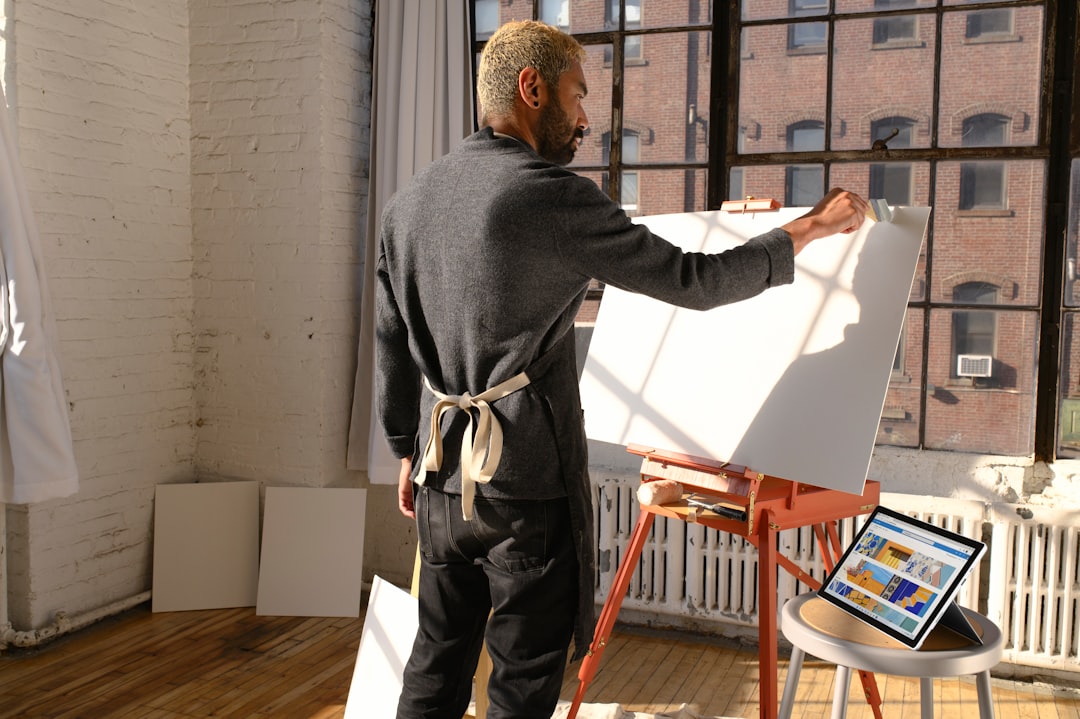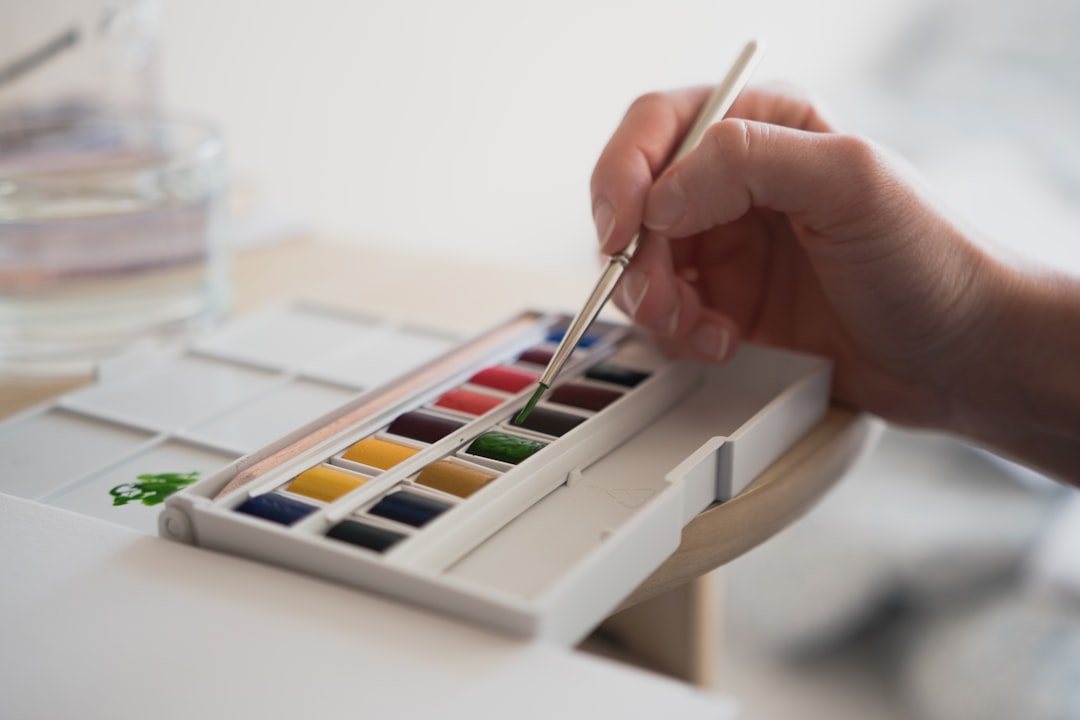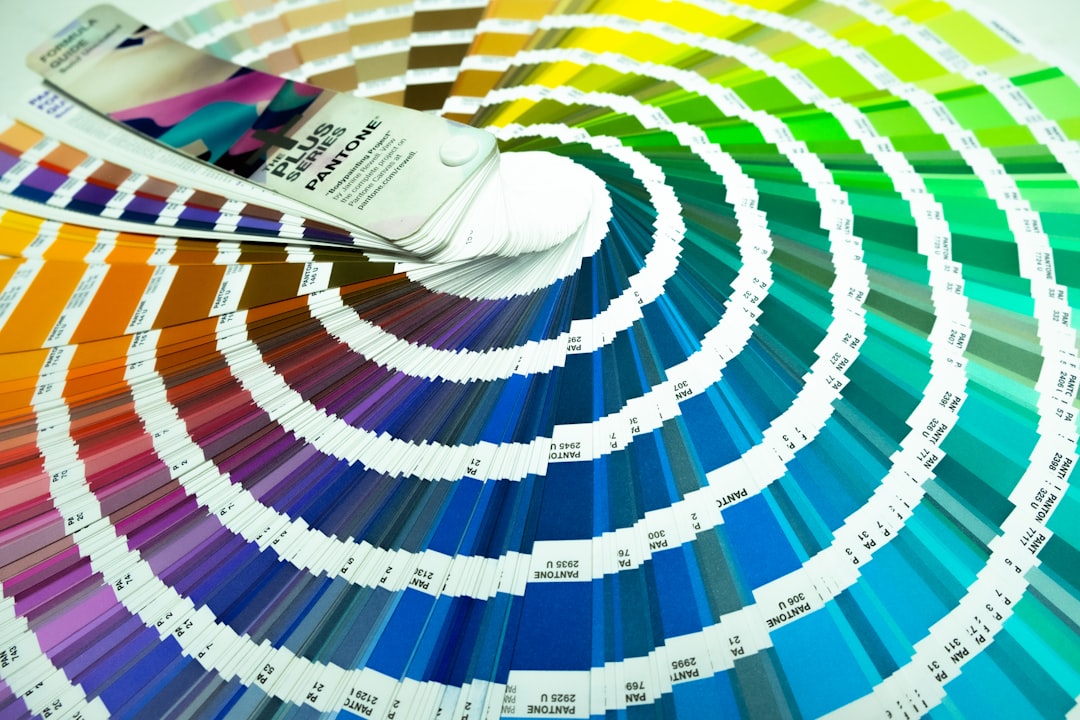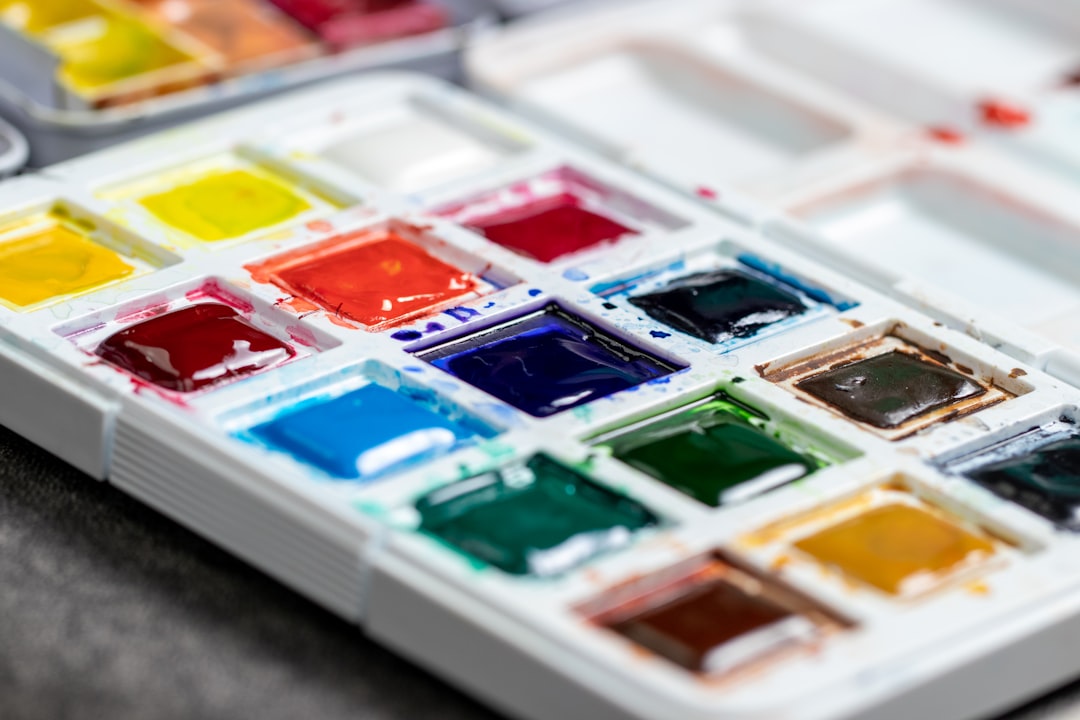

Engage prospects with a scan and streamline customer engagement with FREE QR code marketing tools by Sona – no strings attached!
Create a Free QR CodeFree consultation

No commitment

Engage prospects with a scan and streamline customer engagement with FREE QR code marketing tools by Sona – no strings attached!
Create a Free QR CodeFree consultation

No commitment
Across the commercial painting services industry, competition is fierce and customers expect seamless, convenient ways to connect with providers, whether they are requesting quotes, evaluating project portfolios, or tracking job progress. Traditional marketing strategies often leave a gap between physical interactions, like business cards or on-site signage, and the digital touchpoints that drive customer engagement and new business opportunities. Contractors frequently find themselves missing valuable prospects because interest signals from offline encounters are lost, or because high-potential customers remain anonymous unless they take the extra step to fill out a form.
QR codes have rapidly emerged as the strategic bridge for commercial painting contractors, enabling offline to online experiences that generate leads, surface project information, and simplify communication every step of the way. By integrating QR codes into printed materials, site signage, and equipment labels, painting businesses can eliminate friction, personalize engagement, and gather actionable data, all without requiring app downloads or cumbersome setups. This also addresses a persistent industry pain point: the lack of real-time visibility into who is engaging with your brand, which has traditionally led to missed opportunities and slower responses than competitors. See practical ideas in these QR marketing ideas for inspiration tailored to contractors.
This guide explores how commercial painting professionals can use QR codes to create a smarter, more measurable marketing engine. Discover practical strategies for improving lead generation, tracking real outcomes, and building high-value customer journeys using connected digital solutions that address industry challenges like anonymity, delayed lead capture, and attribution gaps, challenges that often limit the impact of traditional marketing initiatives. For foundational tactics, explore QR codes in marketing.

QR codes bridge the gap between physical touchpoints and measurable digital interactions, making it easier for commercial painting contractors to generate more high-quality leads while streamlining customer workflows. A common frustration in the industry is missing out on high-value prospects when offline engagement is not tracked or acted upon quickly enough. When business cards are tossed, brochures sit on desks, and passersby admire an in-progress exterior without knowing how to contact the contractor, intent decays. QR codes transform those fleeting moments into measurable opportunities.
To modernize your approach, start by replacing slow, analog processes with QR-enabled digital journeys that capture intent the moment it happens. Printed portfolios can point to a live, mobile-friendly gallery, quote forms can be surfaced instantly at a jobsite, and field teams can nudge property managers to scan and schedule a walkthrough. The result is less friction, faster follow-up, and improved conversion rates across the funnel.
Modern QR solutions like Sona QR allow painting businesses to identify and import high-intent contacts into their audience lists for timely follow-up. For example, by embedding unique QR codes on direct mail pieces targeting property managers, a painting company saw a 30 percent uplift in qualified lead submissions within 60 days. The business not only captured more inquiries but also learned which segments were most responsive to certain offers, enabling more precise retargeting.
Just as importantly, QR codes streamline outdated manual tasks. Replace paper estimate sign-up sheets with two-tap mobile forms, swap phone-only appointment scheduling for a scan-to-book calendar, and use QR labels on paint samples that pull up specs, warranties, and compatible coatings. This evolution eliminates delays, reduces errors, and creates a seamless path from initial interest to closed deal.

The commercial painting sector faces unique challenges in converting interest from offline marketing into actionable business results. Many prospects remain unknown because traditional methods cannot surface who is engaging beyond a phone call or a website form. Decision makers often notice a beautifully executed exterior or see a jobsite banner, then move on without taking the extra step to search for the contractor online. QR codes address these hurdles by creating a one-scan connection from physical impression to digital action.
When a building engineer spots a vehicle wrap or a facilities director receives a leave-behind brochure, a QR code gives them a direct path to a quote form, a portfolio, or a scheduling page. This reduces friction dramatically. It also makes every print investment measurable, since scans can be attributed to specific placements, media types, and creative variations. For contractors, that level of insight is invaluable for proving ROI, refining messaging, and winning larger projects with confidence. For additional creative inspiration, review these painting ad examples.
Typical commercial painting scenarios include QR codes on billboard ads to drive quote requests, flyers at property management events to distribute maintenance guides, and appointment cards linking to scheduling portals for walkthroughs. The ability to identify not just that a scan occurred but who engaged, when combined with CRM and analytics integrations, directly addresses the challenge of unknown traffic and helps companies engage leads while intent is at its peak.

QR codes unlock a variety of high-impact formats that tackle the pain points of lead capture and customer engagement. Selecting the right format for each objective ensures a more seamless journey for prospects and clients alike.
For commercial painting teams, the most effective formats tend to be those that accelerate quoting, showcase credibility, and encourage feedback. Below are the core formats and how they fit the painting workflow.
A robust QR platform like Sona QR enables easy deployment and ongoing management of these formats. You can spin up codes, manage destinations, and monitor performance in one place, with the added benefit of real-time attribution and audience enrichment that turns scans into segmented contacts for follow-up.

Effective QR code strategies start where your target audience already interacts with your brand. Many painting contractors overlook the hidden value of moments where potential leads engage anonymously or indirectly, like glancing at a vehicle wrap in a parking garage or holding an estimate without next steps. Identifying these friction points and layering QR code access points directly into them creates reliable pipelines of measurable interest. For additional context, see this forum discussion on QR for painters.
Start by mapping the buyer journey for typical B2B painting projects: awareness as someone sees your work in the field, consideration as they compare vendors and portfolios, and conversion as they schedule walkthroughs or request formal bids. Then select the physical touchpoints that align with these stages and insert QR codes with tailored destinations.
Optimizing placement requires understanding not just where, but when prospects are most likely to engage. For instance, building engineers may be more likely to scan during weekday mornings, while owners may engage after-hours when reviewing proposals. Aligning scan offers with timing and context, such as a quick walkthrough booking link on a jobsite sign, ensures prospects take action based on current need rather than vague interest.

QR codes are versatile enough to improve outcomes in both acquisition and retention. By aligning use cases to common interactions in the commercial painting lifecycle, you create multiple pathways for prospects and clients to engage in ways that match their stage and intent.
Below are three high-impact use cases that consistently deliver value. Each can be implemented quickly, tested with clear KPIs, and scaled across markets without heavy overhead.
These scenarios show how QR codes address recurring challenges like untracked interactions and delayed conversions, while surfacing actionable signals for sales and marketing teams. They also create a more transparent, professional experience for stakeholders who want quick access to information without calls or emails.
With each scan in commercial painting campaigns, you capture intent signals that are perfect for retargeting and lead nurturing. Many painting contractors struggle to assemble high-fit audiences because lead data is incomplete or arrives too late to matter. QR codes change that by tagging behavior at the source. Every scan can be enriched with context like placement, time, and content type, which allows you to tailor next steps precisely. To activate these signals, use intent-driven retargeting.
By deploying multiple QR codes across touchpoints, you can build segmented lists automatically that align to your funnel stages. For instance, a scan from a vehicle wrap suggests early awareness, while a scan from a pricing sheet implies high intent. Mapping these events to specific workflows lets you match your follow-up to buyer readiness and maximize your conversion odds.
Advanced platforms like Sona QR make it possible to automatically enrich scans with identity data when available and sync high-intent audiences directly into advertising and marketing tools. Over time, this systematic approach helps painting businesses reduce lead leakage and outsell slower competitors.
QR codes enhance every element of your multi-channel marketing. The key is to close the attribution gap that often frustrates contractors who want to prove ROI and optimize spend. When each physical asset becomes a data-rich touchpoint, you no longer guess which tactics work. You can see it in your dashboard.
Start by embedding QR codes into the channels you already use, then standardize tracking parameters and measurement. The goal is not just more scans, but more qualified conversations that move quickly toward a site visit or a proposal.
By centralizing QR engagement data with a platform like Sona QR, painting businesses gain full visibility into which channels and placements feed the strongest pipeline. You can then reallocate budget to the highest-performing assets, test new creative, and systematically improve ROI.
A predictable QR program starts with clear goals and a repeatable process. Use this checklist to launch, learn, and scale quickly across markets.
Define the precise business outcome you want to improve. For example, increase quote requests from building owners by 25 percent this quarter, double review volume from completed projects, or drive more site visits from vehicle wraps in a specific metro area. Align the QR destination to that outcome, such as a streamlined quote form or a review page with clear instructions.
Dynamic QR codes offer flexibility and analytics, which are crucial for learning and optimization. Static codes can work for fixed assets, but they limit your ability to adapt after printing.
Start creating QR codes for free.
Design impacts scan rates. Make the QR code unmistakable, easy to scan, and visually aligned with your brand. Include a compelling call to action with a benefit for the scanner. For creative execution ideas, see innovative advertising.
Start where the likelihood of anonymous engagement is highest, then expand. Align placement with audience behavior and scanning context to maximize conversion.
Measurement turns a one-off experiment into a growth engine. Use a centralized platform to monitor scan data, measure conversion, and optimize.
Following this checklist transforms each QR campaign from a tactical add-on into a predictable, scalable part of your lead generation engine. Within a few cycles, you will know which surfaces, CTAs, and offers move the needle and how to invest with confidence.
For commercial painting companies, basic engagement metrics are not enough. Proving which touchpoints deliver real business outcomes has long been a source of frustration. Modern QR technology makes it possible to connect scans to pipeline and revenue, so marketing and operations teams can justify investment and double down on what works.
Proper attribution closes the loop from initial curiosity to proposal and purchase order. Each code can be tied to a campaign, surface type, and message. With the right stack, you can see who scanned, what they viewed, whether they submitted a form, and if that opportunity progressed to a site visit, bid, and close. For a deeper framework, read Sona’s blog post The Essential Guide to Offline Attribution.
Sona QR captures real-world engagement and centralizes performance data. Paired with Sona, an AI-powered marketing platform that turns first-party data into revenue through automated attribution, data activation, and workflow orchestration, you can connect anonymous scans to known buyers through identity resolution when available, then link scan activity to CRM outcomes. The result is a reliable path from scan to revenue and a strong foundation for performance marketing in a physical-first business.
A strong QR strategy is equal parts placement, messaging, and follow-up. These best practices maximize scan rates and ensure each interaction turns into action.
For commercial painting services, QR codes are not just a tactic, they are a foundational element of a modern lead generation and customer engagement strategy. By transforming every business card, site sign, and brochure into a direct, measurable online entry point, painting contractors can accelerate qualification, reduce the risk of anonymous drop-offs, and build an engine that ties marketing effort to revenue impact. QR-enabled workflows convert fleeting in-person interest into persistent data and actionable next steps, which improves speed to lead and increases close rates.
Embedding QR technology into your marketing and sales processes also unifies the buyer journey from first inquiry to completed project. Prospects can review portfolios, verify credentials, and schedule walkthroughs without friction. Clients can submit feedback, view timelines, and request maintenance plans with a scan. The effect is a more transparent, professional, and responsive experience that sets your business apart in a crowded marketplace.
QR codes have redefined how commercial painting services connect offline interactions with digital growth. By embedding personalized, trackable experiences into every phase of the customer journey, painting contractors are addressing industry challenges like unknown traffic, late lead capture, and uncertain attribution. Businesses that adopt these tools are driving higher lead quality, richer insights, and measurable outcomes. In a field where missed opportunities and delayed follow-up can mean the difference between growth and stagnation, integrating QR codes turns each surface and each touchpoint into a data-rich lead source, fueling sustainable competitive advantage.
QR codes have transformed commercial painting services from traditional, one-way communication into interactive, data-driven customer engagement tools. Whether it’s streamlining project updates, enhancing client communication, or enabling instant access to service portfolios, QR codes replace cumbersome processes with seamless, mobile-friendly interactions that capture real-time engagement and boost operational efficiency. Imagine clients scanning a code to instantly view before-and-after galleries or maintenance schedules, elevating their experience and trust in your work.
With Sona QR, you can create dynamic, trackable QR codes in seconds, update linked content anytime without costly reprinting, and directly connect every scan to improved customer satisfaction and repeat business. No missed opportunities—just smarter, more effective ways to showcase your expertise and win new contracts.
Start for free with Sona QR today and turn every scan into a lasting impression, a loyal client, or a closed deal.
Hiring a commercial painting service ensures professional quality, timely project completion, access to specialized coatings and safety certifications, and a seamless customer experience that can include digital tools for easy communication and project tracking.
Choose a contractor who offers transparent portfolios, easy access to quotes and scheduling, strong customer reviews, and uses modern engagement tools like QR codes to provide timely responses and measurable service.
Latest trends include integrating QR codes into marketing materials and jobsite signage to bridge offline and online engagement, dynamic content updates via QR codes, mobile-friendly quote requests, and using data-driven strategies to track leads and optimize campaigns.
The article does not specify exact costs but highlights that QR code marketing can reduce acquisition costs by making lead generation more efficient and measurable.
Effective strategies include using QR codes on brochures, vehicle wraps, jobsite signage, and direct mail to generate leads, automate follow-up through CRM integration, track engagement for data-driven decisions, and personalize content based on customer segments.
Use Sona QR's trackable codes to improve customer acquisition and engagement today.
Create Your FREE Trackable QR Code in SecondsJoin results-focused teams combining Sona Platform automation with advanced Google Ads strategies to scale lead generation

Connect your existing CRM

Free Account Enrichment

No setup fees
No commitment required

Free consultation

Get a custom Google Ads roadmap for your business






Launch campaigns that generate qualified leads in 30 days or less.
